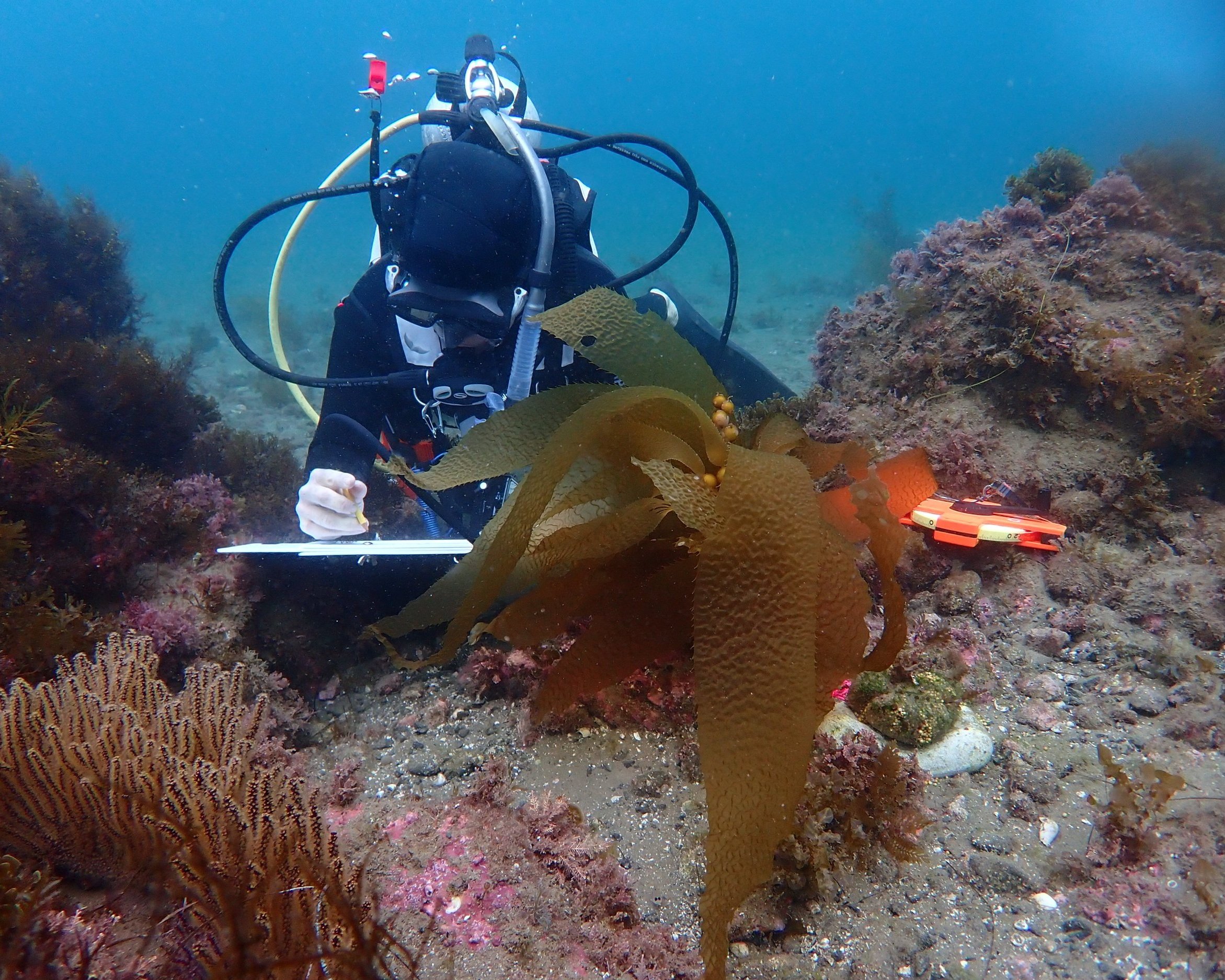
Toyon Bay
Toyon Bay Restoration Sites
We selected two primary sites for kelp restoration in Toyon Bay based on their historical kelp presence — Point Site and Pinnacle Site. At both locations, we are carefully monitoring the key factors influencing kelp loss and recovery — from tracking nonnative algae, assessing the abundance and reproductive health of Giant Kelp, measuring canopy coverage, and more! These efforts are designed to inform and enhance our restoration strategies over time.
As the study progresses, we will continuously refine our methodologies to incorporate new findings, ensuring our restoration efforts remain effective and responsive to evolving conditions.
To expand and explore the above interactive panoramic of Toyon Bay, click the “expand” button in the upper right-hand corner.
Pinnacle Site
Located at the northern end of Toyon Bay, our Pinnacle Site is a key area for kelp restoration. As part of our ongoing study, we are closely monitoring six 4m x 4m plots that were established here in August 2024.
Plots 1, 3, and 5 have been cleared of turf algae to track changes in algae, invertebrates, and fish over time, while plots 2, 4, and 6 serve as control sites for comparison. To encourage kelp recruitment, we periodically deploy kelp spore bags in the cleared plots. Regular kelp censuses of both the plots and surrounding areas help us assess restoration progress and compare it to natural kelp recruitment.
Point Site
Located at the southern end of Toyon Bay, our Point Site is another key area for kelp restoration. As part of our ongoing study, we are closely monitoring six side-by-side plots measuring 10x10 meters — established in August 2024.
Like the Pinnacle Site, we are conducting kelp censuses and tracking changes in algae, invertebrates and fish over time. However, rather than clearing all algae, we are specifically removing Sargassum horneri from plots 1, 3, and 5. Explore additional images and videos of our Point Restoration Site here.
Why Toyon Bay?
Located in a protected cove only two miles from Avalon, Toyon Bay presents an ideal setting for kelp restoration efforts for several reasons.
-

Historical Presence of Kelp
With a rich legacy in conducting marine science programs on Catalina Island, CIMI has firsthand knowledge of Toyon Bay's historical kelp coverage. We're on a mission to restore what once thrived!
-

Access to Resources
Our proximity to several resources — aquariums, dive gear, boats, cameras, staff, etc — will facilitate the project's rapid progress, enabling efficient data and media capture for the restoration research.
-

Connect Students to Project
CIMI Toyon Bay engages 16,000 students annually through school programs and summer camps. Our efforts will increase student participation in kelp restoration, deepen their understanding of climate change impacts and instill confidence in their ability to positively influence the ocean’s health.





